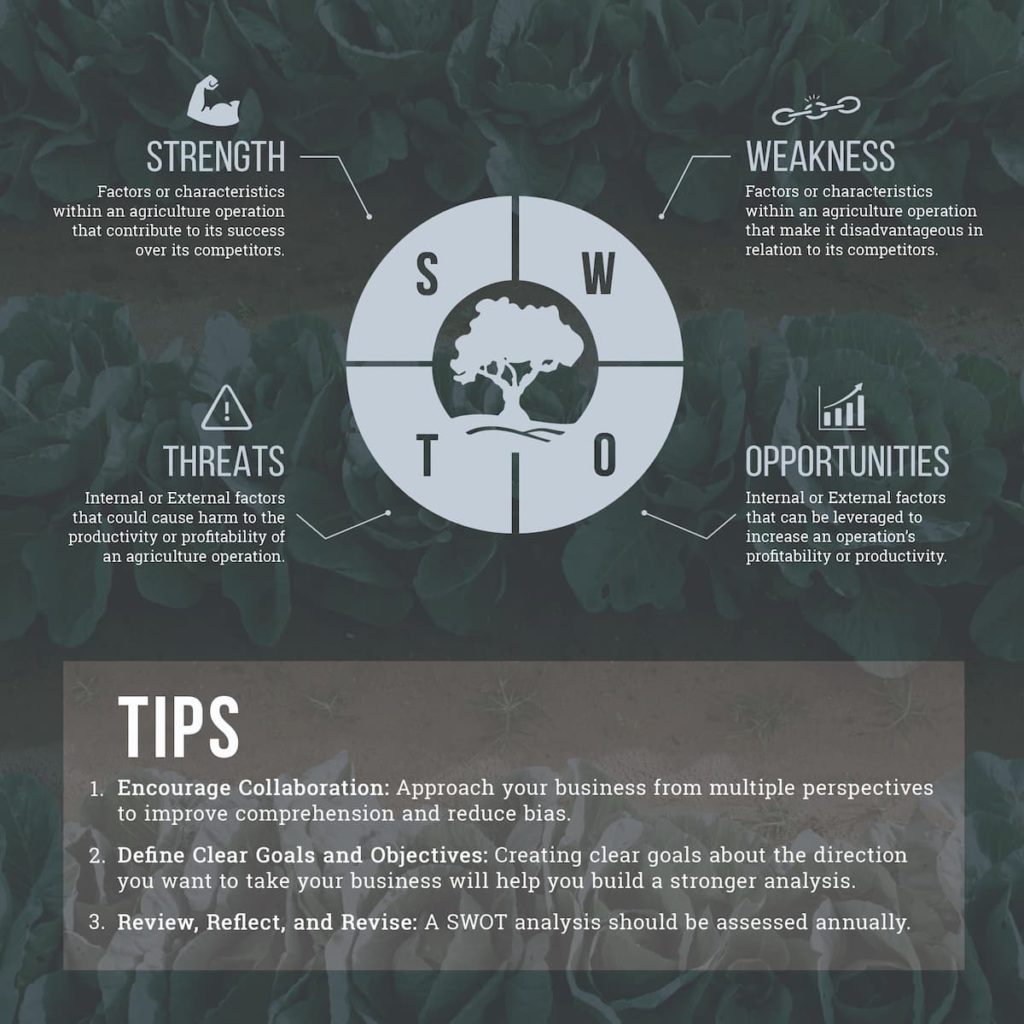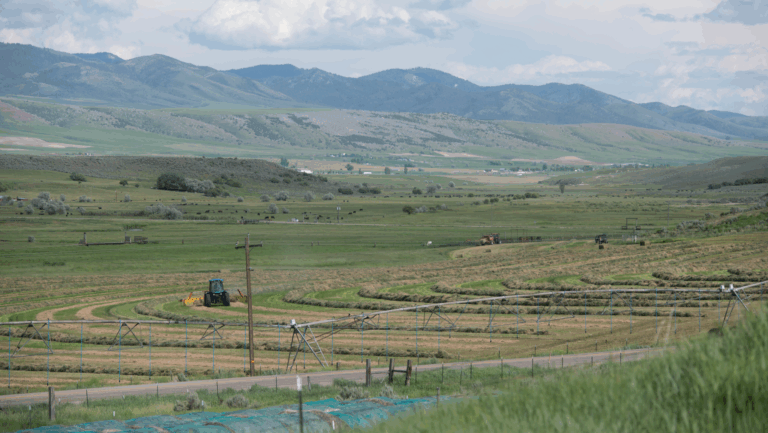Performing a SWOT Analysis on Your Farm Operation
Read to learn what a SWOT analysis is and how it can help your farm succeed.
A SWOT analysis is an advantageous strategy when considering any possible changes to a farm operation. It can also be used to assess past successes and failures while creating future goals. A SWOT analysis organizes thoughts, brainstorms, evaluates and compares potential ideas to bring in additional revenue for a farming or ranching operation. It has the unique ability to show gaps within a business model and highlight possible solutions to existing problems.
When done correctly, a SWOT analysis encourages collaboration and inter-department communication while fostering relationships with those involved. It can be useful for succession farming by easing the transitional process of principal farm operators and keeping everyone on the same page.
How Do You Perform an Agricultural SWOT Analysis?
A SWOT analysis is divided into 4 categories, both internal and external. The internal factors are the strengths and weaknesses of the farming operation, while the external factors are the opportunities and threats. A primary operator has more control over internal factors, such as management and employees. Creating a visual diagram to document factors can help you better assess how each section affects and offsets the others, as well as the holes that may exist within your current farm operation.
Strengths
Strengths of a farm operation reside within the family, employees, and management team. Take note of previous experience that benefits the operation. Understanding the experience that exists within your operation can guide you on who to ask for assistance in specific issues. Farming equipment should also be factored in as a strength or weakness depending on the quality. Also, take into consideration what areas your farming operation excels in. What makes your farm competitive? It could be marketing, packaging, community involvement, or other internal departments. If your operation allows, you can also reach out to customers to hear feedback on aspects of your business they value the most.
Weaknesses
Highlighting strengths can also bring weaknesses to light. Is there a lack of support within your family or internal team for a proposed venture? Is there little prior experience present within your operation? Is your working capital or high debt load inhibiting your ability to update equipment or support full-time farm labor? Evaluate prior decisions and whether or not they negatively impacted your farming business. Taking the time to review weaknesses can shed light on issues that need to be addressed or potential hires that can fill current gaps in experience on your team.
Opportunities
Opportunities are external factors that could potentially impact your farm business or sources for additional revenue. Start-up businesses often have additional access to grants and low-interest rates. Existing businesses have experience on their side, with the ability to learn from past mistakes and successes for future endeavors. Acknowledging and understanding growing trends in the agriculture industry helps farm operators capitalize on opportunities and further withstand unforeseen setbacks.
Threats
These unforeseen setbacks are the other side of external factors to consider in a SWOT analysis. Legislative regulation, adverse weather, rising interest rates, and an ever-changing competitive market are all examples of potential threats that farm operators have little to no control over. Changes in technology can be looked at as both a threat and an opportunity. Communicating possible threats can keep you one step ahead in risk management strategies for your entire operation.
Strategies to Create an Effective SWOT Analysis
Encourage collaboration.
To create a comprehensive and holistic SWOT analysis, involve as many people as possible. The more variety the better. Family members within the operation will not always have the same views as customers. Lawyers and accountants can share insights from their areas of expertise. Even spouses and children of farm employees can provide fresh perspectives on the company. The more variety in background, the higher chances are that new, innovative ideas and solutions will be generated.
Define clear goals and objectives.
Creating clear goals about the direction you want your farm business head in will make a SWOT analysis easier. Much like a business plan, company goals can be modified and updated with time. Common mistakes agribusiness owners make when creating a business plan include,
- Not researching their target audience and existing competition;
- Writing dry, unengaging content that is a bore to read through and update annually; and
- Lack of transparency within internal team members and the external audience.
Creating a business plan can be a laborious feat but it is worth the additional effort in the long run.
Review, reflect, and revise.
A SWOT analysis is not a one-time brainstorming session that gets thrown in a filing cabinet, never to be seen again. It is a business strategy that should be assessed annually at the least and even quarterly if possible. An annual SWOT analysis keeps an open communication line of goals and a clear understanding of how these strengths, weaknesses, opportunities, and threats can offset each other. Proper reflection on these factors helps primary operators develop contingency plans for the future. Just be sure to go back and measure the success and setbacks of previous SWOT analyses to optimize its value.
Taking Control of Your Farm’s Finances
At AgAmerica, our agricultural loan specialists are able to create customized loan packages with tier-pricing and flexible payment options. As a non-bank lender, we’ve had the opportunity to help hundreds of farmers and ranchers achieve financial stability within a volatile industry through financing tailored to their operation. Speak with one of our land lending experts to learn more about our spectrum of loan options.







